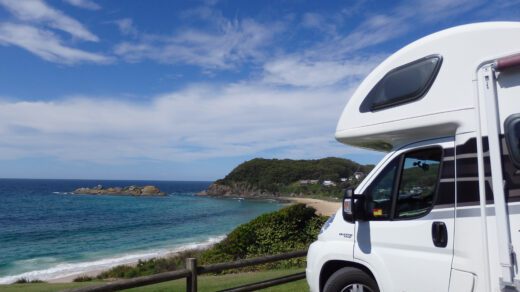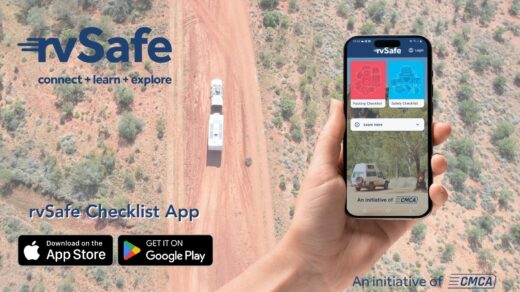1 – Stay Calm and Assess the Situation
Your first priority is to stay calm. Panic can lead to poor decisions. Take a moment to:
- Check for injuries.
- Evaluate your surroundings.
- Determine if there’s an immediate danger (e.g., fire, traffic, weather).
2 – Pull Over Safely
If your RV breaks down:
- Find a safe spot—preferably an emergency lane or the far-left side of the road.
- Turn on hazard lights and, if visibility is poor, your parking lights.
- Turn your wheels away from traffic to prevent rolling.
- Exit via the passenger side if you must leave the vehicle.
- Use safety gear like hi-vis vests, cones, and reflective triangles to alert other drivers.
3 – Respond to Immediate Hazards
If there’s a fire, gas leak, or other urgent threat:
- Evacuate the RV/tow vehicle immediately.
- Use a fire extinguisher if safe.
- Shut off propane and electrical systems.
- Call 000—even if you have no credit on a pre-paid device or coverage with your mobile carrier, the call may still go through.
4 – Medical Emergencies
- Administer first aid promptly.
- Use a well-stocked first aid kit to stabilise the situation.
- Call 000 and provide clear details.
- Be aware that help may take time to arrive, especially in remote areas.
5 – Weather and Environmental Risks
- Avoid travel during extreme heat, heavy rain, or bushfire conditions.
- Stay hydrated and seek shade if stranded in hot weather.
- Watch for signs of heat stress: dizziness, nausea, cramps, or fainting. Cool down with water and rest.
6 – Communication and Location Awareness
- Use the Emergency+ app to share your GPS coordinates with responders—even without mobile signal.
- Consider carrying a Personal Locator Beacon (PLB) for remote travel. These devices send your location to the Australian Rescue Coordination Centre via satellite.
7 – Emergency Kit Essentials
Always carry:
- First aid supplies
- Water and snacks
- Hi-vis vests and cones
- Fire extinguisher
- Emergency beacon or PLB
- Flashlight and batteries
- Maps and contact numbers
8 – Call for Help
- Contact roadside assistance. Make sure you have a roadside assistance policy before leaving home! (24/7 Roadservices Australia has specialised RV products with special offers available for CMCA members)
- Provide clear details about your location and the nature of the emergency.
- If obstructing traffic or in a hazardous spot, assistance will be prioritised.
9 – After the Emergency
- Document the incident for insurance.
- Inspect your RV/tow vehicle before continuing.
- Adjust travel plans as needed and notify any reservations or contacts.
Emergencies are unpredictable, but preparation and a calm, informed response can turn a crisis into a manageable situation. Whether you’re a seasoned RVer or new to the lifestyle, these steps can help keep you safe and confident on the road.





